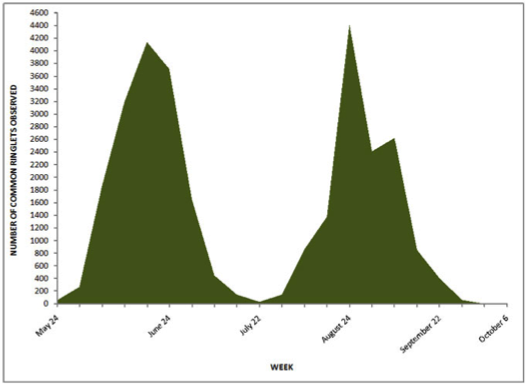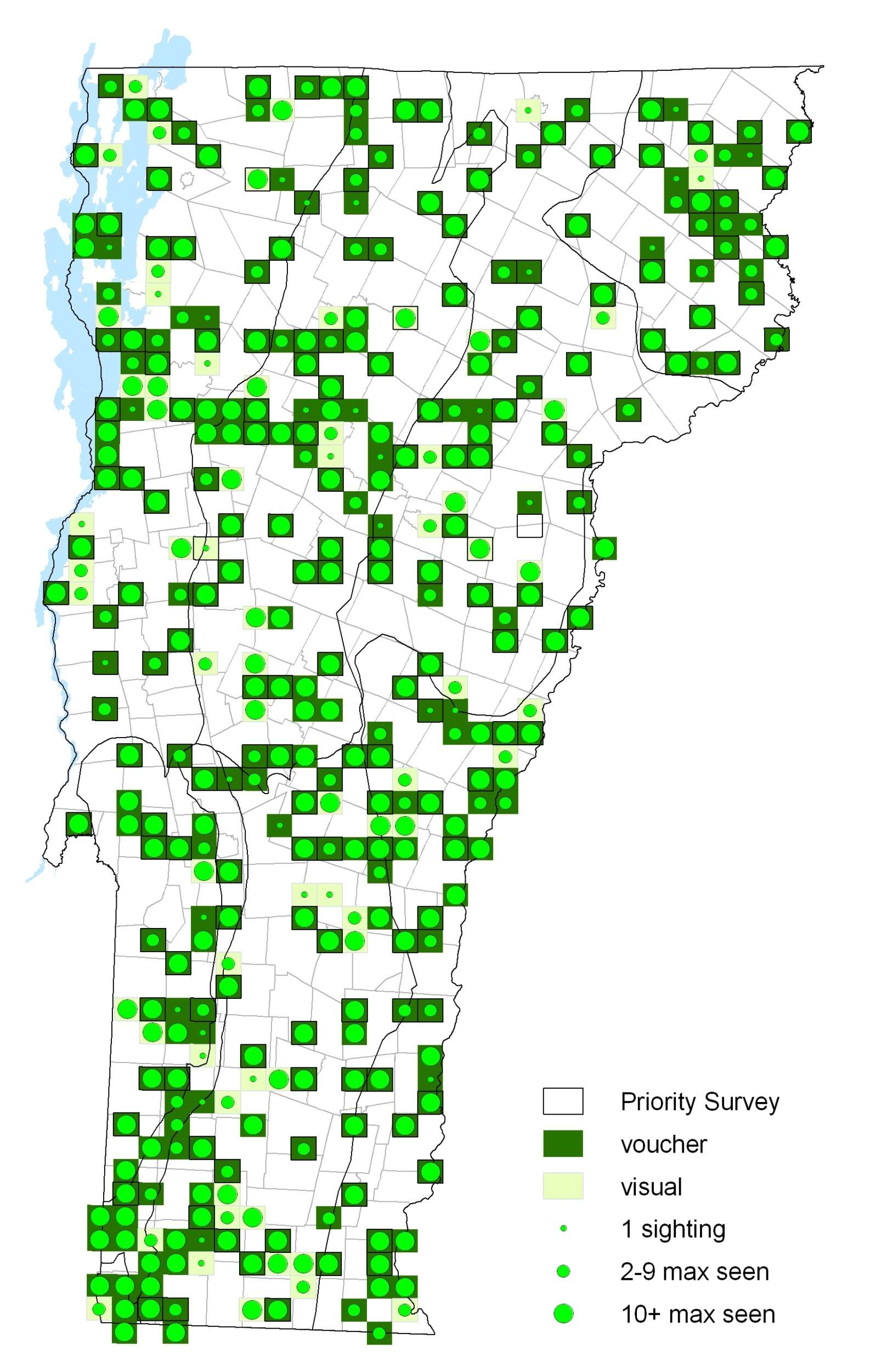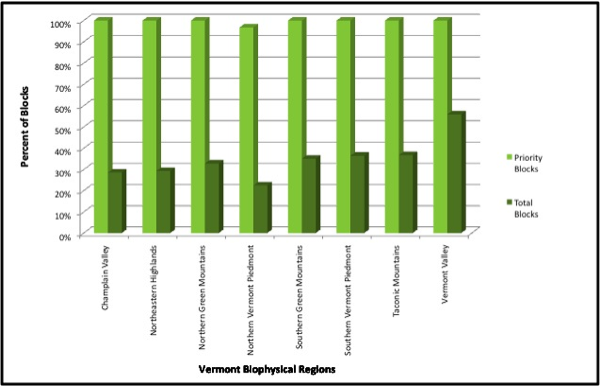|
Resident Conservation Status North American Range |
In 1931 Holland wrote that the eastern range was “northern Ontario and Quebec to Labrador and Newfoundland.” They have since spread southward and arrived in Maine in 1968, Massachusetts in 1978 and were first noted in Vermont in 1980. They are now abundant throughout New England. On warm days, males patrol with a bouncy flight, but during cool northern mornings, both males and females remain perched on blades of grass. First through fourth stage caterpillars overwinter in mats of dead grass. Unlike most Satyrines, the Common Ringlet relies predominantly on nectar when feeding.
Identification
Extremely variable geographically, with at least four subspecies. Wings range from dark orange-brown to pale cream. Underside of forewing usually has a small eyespot near its tip. Underside of hindwing is gray-green with a wavy white median line.
Flight
During VBS two generations were found. They can be found in astounding abundance during the peak of both flights. Extreme dates: 16 May 2004 in Pittsford (R. Pilcher) and 6 October 2002 in Plainfield (B. Pfeiffer).
Distribution and Habitat
The earliest known record in Vermont was 25 June 1980 in Grafton (S. Parren). By the early 1990s they were common throughout the state. One of the most abundant and widespread butterflies recorded during VBS with only one priority block without a detection. They favor open, grassy habitats such as yards, fields, grasslands, roadsides and open meadows. Caterpillars feed on grasses such as Kentucky Bluegrass (Poa pratensis). Unusual for satyrids, adults regularly nectar. During VBS reported nectaring on blackberry, hawkweed, red clover, bedstraw and cinquefoil.







